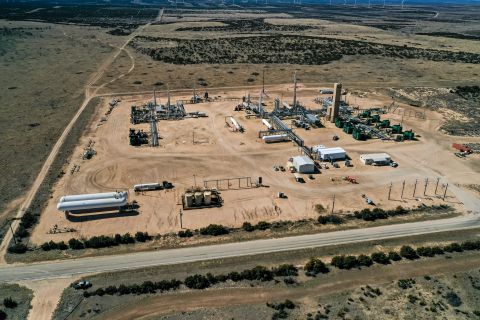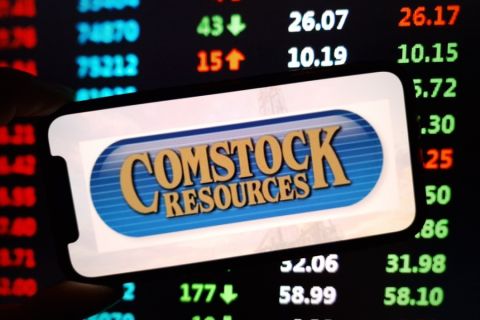
Tankers wait at the Port of Singapore. U.S. crude oil exports have promising prospects, says Morningstar, especially with arbitrage opportunities to Europe and Asia. (Source: Shutterstock)
How have U.S. crude exports fared in the years since the ’70s ban was lifted at year-end 2015?
One must jump forward to 2017 to gauge significant progress, since the industry downturn muffled the export response until then. Now, however, with crude prices higher and some time for international market conditions to develop more favorably, U.S. producers are moving more barrels overseas, and not just to Canada—the initial focal point—but also to Asia and Europe.
Morningstar Commodities Research recently released a comprehensive report on how the crude export market has developed in the U.S. and what the industry can look forward to in the coming years.
Overall, prospects look fairly robust, although infrastructure—particularly facilities to load VLCC cargoes (2 million-barrel capacity) from docks in Corpus Christi and the Houston region—is needed, as well as a continuing supportive price environment driven by demand and other factors.
Exports averaged 1.7 million barrels per day (MMbbl/d) between Dec. 31, 2017, and May 11. “That is double the 0.8 MMbbl/d average over the same period in 2017,” said the report. “A new weekly record of 2.6 MMbbl/d was set during the week ended May 11.”
Crude prices have obliged of late. U.S. exporters need a premium between WTI crude and Brent to make shipments economic and the report pegs the necessary Brent premium at $3/bbl or more.
From February to about May of this year, “the Brent premium over WTI has averaged $4.65/bbl and the Dubai premium over WTI has averaged $1.55/bbl,” the researchers wrote, “keeping the arbitrage windows open for export cargoes to Europe and Asia.”
In fact, with the takeaway crunch in the Permian discounting Cushing by about $1.71/bbl, “Brent prices are in effect $6.37 above WTI at the wellhead—further encouraging export sales,” the report said.
Production has kept pace as U.S. operators ramped up quickly and pushed the rig count to more than 1,000. From February to May, production rose to 10.7 MMbbl/d. Further, “the OPEC agreement to cut supplies continues to be successful,” according to the report, “and the crude market outside the U.S. is tight, providing demand for U.S. exports.”
Prices and production targets may be falling into line for exports, but what about the infrastructure needed on the Gulf Coast? VLCC capacity is critical to carry the size of cargoes that are economic to compete worldwide.
At present, the LOOP terminal is the only Gulf Coast terminal able to handle a fully laden VLCC, and Morningstar notes it is currently primarily used for imports. Others are in the works: The Port of Corpus Christi, Buckeye, and Jupiter MLP have announced plans for VLCC-capable facilities, and Enterprise Products Partners is testing a VLCC vessel at its Texas City dock near Houston, according to the report.
For U.S. crude exports to continue to develop, Morningstar said necessary ingredients include continued WTI discount pricing to Brent; international market demand driven by factors such as the OPEC agreement, sanctions on Iranian exports and more; trade negotiations with China that could drive crude exports; continued production growth; and perhaps most critical, the infrastructure buildout for VLCCs. The authors also cite the need for a “transparent U.S. export crude price market underpinned by a future contract.”
Recommended Reading
Midstream M&A Adjusts After E&Ps’ Rampant Permian Consolidation
2024-10-18 - Scott Brown, CEO of the Midland Basin’s Canes Midstream, said he believes the Permian Basin still has plenty of runway for growth and development.
Post Oak-backed Quantent Closes Haynesville Deal in North Louisiana
2024-09-09 - Quantent Energy Partners’ initial Haynesville Shale acquisition comes as Post Oak Energy Capital closes an equity commitment for the E&P.
Analyst: Is Jerry Jones Making a Run to Take Comstock Private?
2024-09-20 - After buying more than 13.4 million Comstock shares in August, analysts wonder if Dallas Cowboys owner Jerry Jones might split the tackles and run downhill toward a go-private buyout of the Haynesville Shale gas producer.
Aethon, Murphy Refinance Debt as Fed Slashes Interest Rates
2024-09-20 - The E&Ps expect to issue new notes toward redeeming a combined $1.6 billion of existing debt, while the debt-pricing guide—the Fed funds rate—was cut on Sept. 18 from 5.5% to 5%.
Dividends Declared Sept.16 through Sept. 26
2024-09-27 - Here is a compilation of dividends declared from select upstream, midstream and service and supply companies.
Comments
Add new comment
This conversation is moderated according to Hart Energy community rules. Please read the rules before joining the discussion. If you’re experiencing any technical problems, please contact our customer care team.






